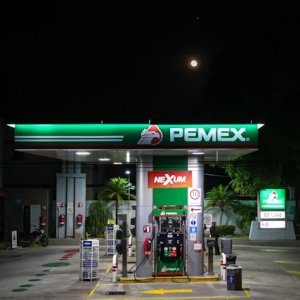Producing More Food with the Existing Agricultural Land

STORY INLINE POST
Q: Why is Mexico in Syngenta’s global portfolio and how is the company positioned here?
A: Syngenta is a leading company in crop protection in Mexico. We have three major divisions, the first being crop protection, that includes insecticides, herbicides, fungicides, and seed treatment. The other two areas are focused on seed development, mainly for vegetables, with maize as a separate area of research. However, the market for maize is highly significant in Mexico, so we are working hard to gain participation in that market, as well.
Mexico is a key element in our global performance. Unlike other countries like the US and Brazil, the country grows crops in both the autumn-winter and spring-summer seasons. The northern part of the country has temperate weather while the south is tropical. This allows production of a wide variety of crops, including grains, beans, sorghum, maize, tomato, soy, as well as tropical crops like coffee, sugarcane, mango and banana. Because there are different climate types, there is also a wide variety of plagues and threats for crops.
Q: What are Syngenta’s primary concerns regarding the Mexican seeds market?
A: One of our main concerns are the changes in climate conditions. Higher and lower temperatures, excess or lack of humidity, all of these factors become real challenges when creating solutions that make crops more resilient. Our seed care technology can be compared to giving a vaccine to a crop, this protects it from disease, plagues and makes it more tolerant to the stress caused by changing weather conditions.
Q: How open are Mexican farmers to adopting Syngenta’s solutions and how have those solutions changed farming here?
A: When I joined the industry 28 years ago, farmers in the center and south of the country, used to do manual weed control. We hired agronomists and technicians who knew agriculture and spoke the local languages to transfer knowledge. We made a similar effort with our distributors. This process led to a shift in practices among farmers from manual control to chemical treatment. The result was less erosion – traditionally, hoes were used to open up the soil, remove grass and allow water to run-off. The use of chemical treatments also had a positive social impact. Suddenly, the whole family no longer needed to work the land. With less time spent on weed control, wives and children could dedicate their time to other activities, such as school. The overall result was more productivity with less work.
In southern Mexico, average production has gone up from 2-3 tons to 6-8 tons per hectare. This change has happened on the same soil, with the same rain and the same farmer. Knowledge transfer and development of new technologies has gradually reduced the chemical burden on the soil. Since the 1950s, the quantity of active ingredients used has reduced by 95 percent. These days, you only need 5g/hectare of active ingredients to control a plague where producers used to apply 1kg/hectare. Our agronomists and technicians transfer knowledge through demonstrative parcels, because word of mouth between farmers is the most effective tool for promoting our technologies.
Q: The government has defined the agricultural sector as a priority. How can Syngenta support the current administration on this?
A: There is a growing demand for food. We import more maize, rice and legumes to feed our population and our livestock. We need to produce more food without expanding the agricultural frontier. Instead, we have to make agricultural land more productive, while we take care of the environment, this is what is in the center of our R&D efforts. Syngenta can collaborate with the government to develop these solutions at a favorable cost, fostering greater production volume per surface and delivering better economic results. For the past three years we have been working on raising maize production in Campeche. Last year we impacted over 20,000ha and demonstrated that with the adequate technology, farmers can increase productivity by 20 percent.
Another way in which we can contribute with the food security is by anticipating biological problems in crops. For example, when coffee rust disease arrived to Mexico, we had already registered a technology that coffee farmers could use to tackle the problem.
Q: What are Syngenta’s plans to expand its R&D capabilities in Mexico?
A: Our plant in San Luis Potosi is focused on formulation. There we produce for Mexico and other countries. We have an experimental station in Culiacan where we design in-demand horticulture produce: tomatoes, peppers and chilies. Our geneticists develop crop varieties with the characteristics consumers are demanding (flavors, colors and shape), as well as some characteristics that allow the crop to be more resilient to biological threats and climate change.
Q: What are Syngenta’s next steps?
A: Farmers today face increasing challenges including climate change, soil erosion and biodiversity loss, as well as having to manage changing consumer expectations and views on agricultural technology. We aim to support farmers by further improving the way crops are grown and protected, and to work with partners to find solutions that address interconnected environmental, societal and economic challenges.
Our work will focus on developing new products in consideration of sustainability principles. We will strive for the lowest residues in crops and the environment. We will work with partners to further reduce residues in crops without impacting farmer productivity, and continue to improve soil health and prevent soil erosion.
Syngenta is a global company that produces agrochemicals and seeds. It is a leading producer of crop protection products worldwide. In Mexico, Syngenta has one experimental station where it works on seed development.








 By Jan Hogewoning | Journalist and Industry Analyst -
Fri, 01/03/2020 - 10:00
By Jan Hogewoning | Journalist and Industry Analyst -
Fri, 01/03/2020 - 10:00













